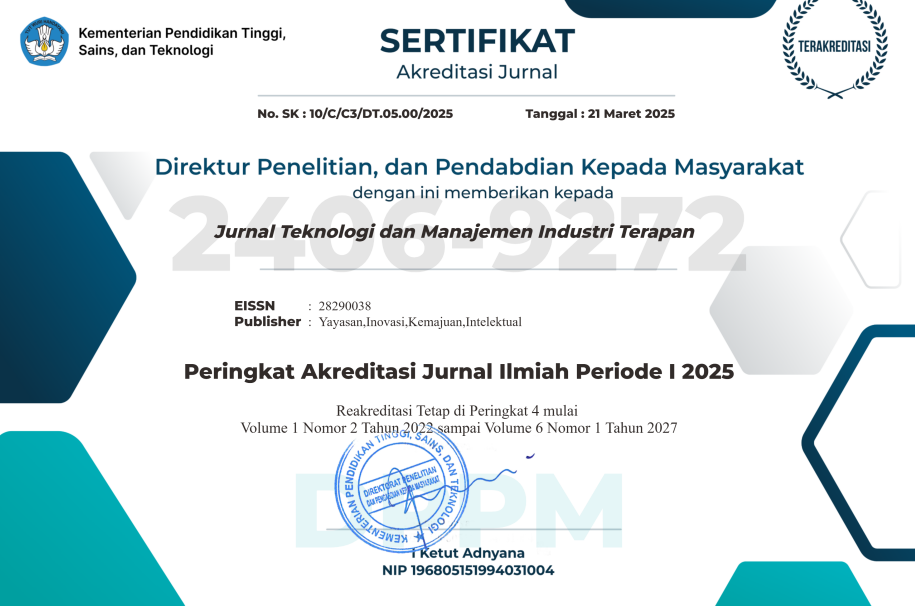Evaluating The Environmental Impacts of Electricity Grids and Geographical Factors on Co₂ Emissions from Electric Vehicle Adoption
DOI:
https://doi.org/10.55826/jtmit.v3i2.1172Keywords:
Electric Vehicles, Internal Combustion Engine Vehicles, Life Cycle Assessment, System Dynamics, Bass Diffusion Model.Abstract
The global interest in electric vehicles (EVs) to reduce CO2 emissions requires understanding their emission-mitigating factors. This study investigates how electricity grid characteristics and geographical factors affect EV adoption and associated emissions. We address two questions: (1) Does a country's electricity grid significantly impact EV effectiveness in reducing CO2 emissions? and (2) To what extent does the geographical factor of EV production influence emissions? Two methodologies are used to answer these QRs: life cycle assessment to calculate the CO2 emission throughout the EV life cycle, subject to the electricity grid and EV supply chain, and system dynamics to simulate the impact of EV adoption on CO2 emission reduction. The results will provide valuable insights for policymakers, enabling them to design effective strategies to promote sustainable EV adoption and maximize the environmental benefits of transitioning to electric mobility.
References
K.J. Dilman, Á.Árnadóttir, J. Heinonen, M. Czepkiewicz and B. Davíðsdóttir, “Review and meta-analysis of evs: Embodied Emissions and Environmental Breakeven,” Sustainability, Vol. 12, No. 22, p.9390, 2020. https://doi.org/10.3390/su12229390
M. Safayatullah, “ A Comprehensive Review of Power Converter Topologies And Control Methods for Electric Vehicle Fast Charging Applications,” IEEE Access, Vol. 10, p.40753–40793, 2022. https://doi.org/ 10.1109/ACCESS.2022.3166935
J. Deng, “Electric vehicles batteries: Requirements and challenges,” Joule, Vol. 4, No. 3, p.511–515, 2020. https://doi.org/10.1016/j.joule.2020.02.011
I. Aghabali, J. Bauman, P.J. Kollmeyer, Y. Wang, B. Bilgin, and A. Emadi, “800-V Electric Vehicle Powertrains: Review and Analysis of Benefits, Challenges, and Future Trends,” IEEE Transactions on Transportation Electrification, Vol 7, No. 3, p.927–948, 2021. https://doi.org/10.1109/TTE.2020.3044938
IEA, Global EV policy explorer. International Energy Agency, 2023. https://www.iea.org/data-and-statistics/data-tools/global-ev-policy-explorer
Q. Qiao, F. Zhao, Z. Liu, H. Hao, X. He, S.V. Przesmitzki, and A.A. Amer, “Life Cycle Cost and GHG Emission Benefits of Electric Vehicles In China,” Transportation Research Part D: Transport and Environment, Vol. 86, p.102418, 2020. https://doi.org/10.1016/j.trd.2020.102418
L. Lachvajderová and J. Kádárová, “Emissions In Life Cycle of Electric Vehicle,” Perner’s Contacts, Vo. 15, No. 2, p.45–52, 2020. https://pernerscontacts.upce.cz
L. Wang, Z. Qin, T. Slangen, P. Bauer and T. van Wijk, “Grid Impact of Electric Vehicle Fast Charging Stations: Trends, Standards, Issues and Mitigation Measures—An Overview,” IEEE Open Journal of Power Electronics, Vo. 2, p.56–74, 2021. https://doi.org/10.1109/OJPEL.2021.3054601.
X. Lai, Q. Chen, X. Tang, Y. Zhou, F. Gao, Y. Guo, R. Bhagat and Y. Zheng, “Critical Review of Life Cycle Assessment of Lithium-Ion Batteries for Electric Vehicles: A Lifespan Perspective,” eTransportation, Vol. 12, p.100169, 2022. https://doi.org/10.1016/j.etran.2022.100169
M. Ehsani, “State of the Art and Trends In Electric And Hybrid Electric Vehicles,” Proceedings of the IEEE, Vol. 109, No. 6, p.967–984, 2021. https://doi.org/10.1109/JPROC.2021.3072788
W. Liu, T. Placke and K.T. Chau, “Overview of Batteries and Battery Management for Electric Vehicles,” Energy Reports, Vo. 8, p.4058–4084, 2022. https://doi.org/10.1016/j.egyr.2022.03.016
F. Un-Noor, S. Padmanaban, L. Mihet-Popa, M.N. Mollah and E. Hossain, “A Comprehensive Study of Key Electric Vehicle (EV) Components, Technologies, Challenges, Impacts, and Future Direction of Development,” Energies, Vol. 10, p.1217, 2017.
P. Sun, R. Bisschop, H. Niu and X. Huang, “A Review of Battery Fires In Electric Vehicles,” Fire Technology, Vo. 56, No. 4, p.1361–1410, 2020. https://doi.org/10.1007/s10694-019-00944-3
M. İnci, M. Büyük, M.H. Demir and G. İlbey, “A Review and Research on Fuel Cell Electric Vehicles: Topologies, Power Electronic Converters, Energy Management Methods, Technical Challenges, Marketing and Future Aspects,” Renewable and Sustainable Energy Reviews, Vo. 137, p.110648, 2021. https://doi.org/10.1016/j.rser.2020.110648
S.H. Farjana, M.A.P. Mahmud and N. Huda, “Life Cycle Assessment for Sustainable Mining,” Journal of Cleaner Production, Vo. 278, p.123–134, 2021. https://doi.org/10.1016/j.jclepro.2020.123456
K.-M.Lee and A. Inaba, Life Cycle Assessment: Best Practices of ISO 14040 Series. APEC Committee on Trade and Investment, 2004. https://www.apec.org
ISO Standards Policy and Strategy Committee, Environmental Management—Life Cycle Assessment—Principles and framework (ISO Standard No. 14040), International Organization for Standardization, 2006. https://www.iso.org/standard/37456.html
S.J. Calland and J.M. Thomas, Environmental Economics and Management: Theory, Policy, and Applications 6th Ed., Nelson Education Ltd, 2010.
F. Habermacher, Modeling Material Inventories And Environmental Impacts of Electric Passenger Cars, Master’s thesis, ETH Zurich, 2011. https://ethz.ch
J. Sterman, Business Dynamics. Chennai: McGraw Hill Education (India) Private Limited, 2020.
I. Husain, “Electric Drive Technology Trends, Challenges, and Opportunities for Future Electric Vehicles,” Proceedings of the IEEE, Vo. 109, No. 6, p.1039–1059, 2021. https://doi.org/10.1109/ JPROC.2020.3046112
J. Baars, T. Domenech, R. Bleischwitz, H.E. Melin and O. Heidrich, “Circular Economy Strategies for Electric Vehicle Batteries Reduce Reliance on Raw Materials,” Nature Sustainability, Vol 4, No. 1, p.71–79, 2021. https://doi.org/10.1038/s41893-020-00607-0
P. Barman, L. Dutta, S. Bordoloi, A. Kalita, P. Buragohain, S. Bharali and B. Azzopardi, “Renewable Energy Integration with Electric Vehicle Technology: A Review of the Existing Smart Charging Approaches. Renewable and Sustainable Energy Reviews, Vol. p.183, 113518, 2023. https://doi.org/10.1016/j.rser.2023.113518
World Bank, GNI per capita, Atlas method (current US$)—Indonesia. Tersedia online, Diakses pada tanggal 10 Maret 202, https://data.worldbank.org/indicator/NY.GNP.PCAP.CD?locations=ID
J. Massiani and A. Gohs, The Choice of Bass Model Coefficients to Forecast Diffusion for Innovative Products: An Empirical Investigation for New Automotive Technologies,” Research in Transportation Economics, Vol. 50, p.17-28, 2015.
Gaikindo, Indonesian Automobile Industry Data. Tersedia online, Diakses pada tanggal 10 Maret 2023. https://www.gaikindo.or.id/indonesian-automobile-industry-data/
Downloads
Published
Issue
Section
License
Copyright (c) 2024 Lucia Diawati, Fandi Rahanra

This work is licensed under a Creative Commons Attribution-NonCommercial-ShareAlike 4.0 International License.


















